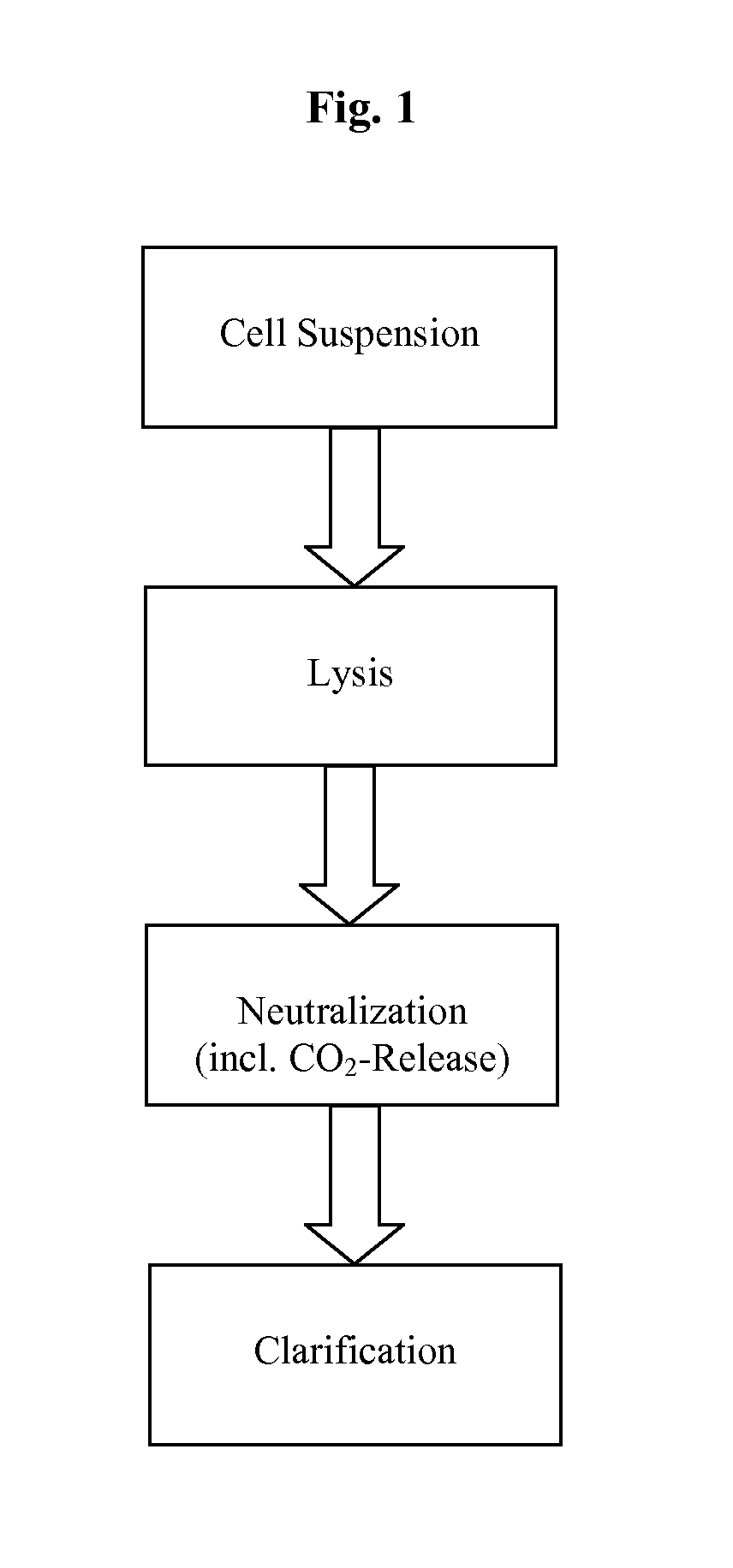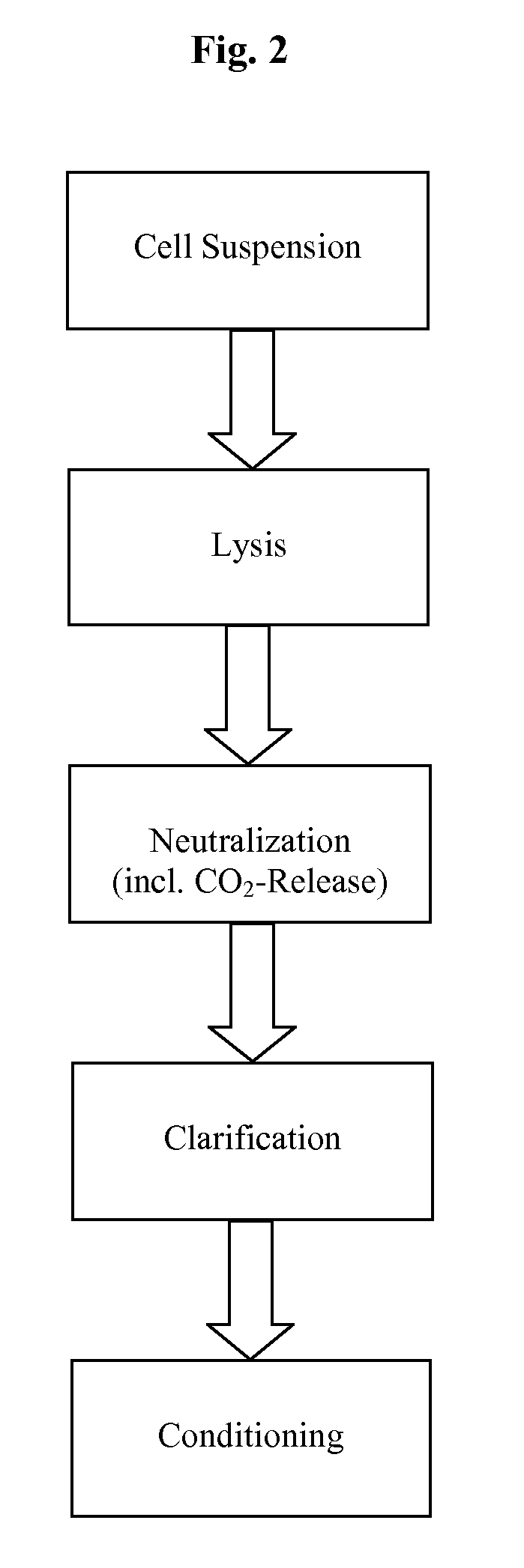Methods and devices for producing biomolecules
a biomolecule and technology of a clarification device, applied in the field of polynucleotides, can solve the problem of limiting the capacity of the clarification devi
- Summary
- Abstract
- Description
- Claims
- Application Information
AI Technical Summary
Benefits of technology
Problems solved by technology
Method used
Image
Examples
example 1
Production of pDNA-Containing E. coli Cells
[0169]The pDNA containing E. coli biomass was produced according to WO 2004 / 085643 or according to WO2005 / 097990.
example 2
Verification of the Principle Applicability of Improved Floatation by CO2 Release from Carbonate (-Salt) During Neutralization in an Alkaline Lysis Process
[0170]First experiments were carried out with buffers only, without biomass. Different carbonate-salts (e.g. K2CO3 and NaHCO3, which are advantageous since K+ and Na+ as counter-ions to CO32− are already present in the buffers / solutions used for lysis or neutralization) were added to the resuspension buffer or the lysis solution in a concentration of 0.5 M. While solubility in the buffers were examined on the one hand, on the other hand the intensity of CO2 release during neutralization and consequences on floatation of flocs (generated during neutralization) were examined.
[0171]It was observed that 0.5 M NaHCO3 could be well solubilized in the buffer usually used for resuspension of the biomass (containing 0.05 M Tris and 0.01 M EDTA at pH 8) and resulted in extensive CO2 release when acidified by mixing with the neutralization s...
example 3
Optimization of the Carbonate-Concentration (in the Resuspension Buffer)
[0175]These experiments were carried out as described in Example 2 using different NaHCO3 concentrations (0 M=reference, 0.05 M, 0.07 M, 0.1 M and 0.2 M) in the resuspension buffer (P1) and 1.1 g biomass respectively. After neutralization the floc containing lysate was hold for 3 min and afterwards clarified by centrifugation (lab centrifuge at 7500 rpm). The lysate (after centrifugation recovered as the supernatant) was analyzed regarding concentration (yield) and pDNA homogeneity (HPLC). The pellets were washed and the wash-fractions also analyzed in the same manner. Furthermore the impact of the addition of the NaHCO3 on the pH of the resulting mixture with lysate solution (P2) was investigated. The experiments were carried out in 4-fold repetition. the results are summarized in Tab. 1.
TABLE 1Results (average of 4 repetitions) of Example 3NaHCO3 conc.YieldHomogeneitypHin P1 (M)(μg / mL / %)(% ccc)of P1 / P2 mixture...
PUM
| Property | Measurement | Unit |
|---|---|---|
| radius of gyration | aaaaa | aaaaa |
| concentration | aaaaa | aaaaa |
| cell mass | aaaaa | aaaaa |
Abstract
Description
Claims
Application Information
 Login to View More
Login to View More - R&D
- Intellectual Property
- Life Sciences
- Materials
- Tech Scout
- Unparalleled Data Quality
- Higher Quality Content
- 60% Fewer Hallucinations
Browse by: Latest US Patents, China's latest patents, Technical Efficacy Thesaurus, Application Domain, Technology Topic, Popular Technical Reports.
© 2025 PatSnap. All rights reserved.Legal|Privacy policy|Modern Slavery Act Transparency Statement|Sitemap|About US| Contact US: help@patsnap.com



